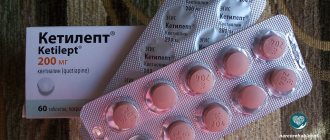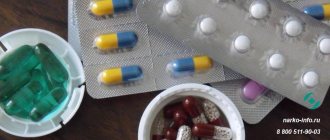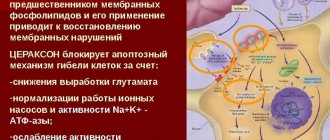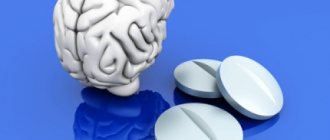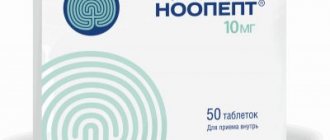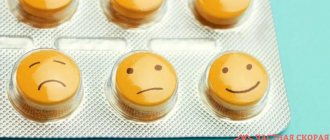According to statistics provided by law enforcement agencies, among the total number of Russians who use drugs, approximately two to three are young people. A significant part of them tried dangerous and prohibited substances for the very first time in their lives, not purchasing them from street dealers, but by visiting the most ordinary and legal pharmacy. Such figures are striking; one can be convinced that the authorities’ desire to tighten the procedure for handling narcotic pharmaceuticals does not bring the desired results. Those who wish still find new options to overcome the obstacles presented. Among pharmaceutical drugs there are a large number of addicted patients with considerable experience, as well as those who are simply consumed by curiosity.
“Pharmaceutical drugs” - what are they?
“Pharmaceutical drugs” mean a group of medications that can be freely purchased in pharmacies. You do not need to get a prescription from a doctor for this. This is their unofficial name. Some of these drugs turn out to be actually ready-to-use psychoactive substances that are used to obtain euphoria and pleasure. Others are purely raw materials for preparing illegal intoxicating mixtures at home. What they have in common is that they contribute to the development of addiction, which can only be gotten rid of after long and difficult treatment.
Consumers of illegal substances are attracted to these “pharmacy drugs” by their low cost, and they are much easier to obtain than illegal and harder drugs.
Pharmaceutical drugs available in pharmacies for free sale have the appropriate effect, even when taken in doses prescribed by doctors. If you start taking more than the daily dose specified in the instructions, there is a high risk of encountering dangerous and negative side reactions. The consequences can be dire, even death. In this case, each situation must be considered separately, taking into account the chemical composition of the drug, its individual characteristics and properties.
People who purchase these “pharmacy drugs” have different goals. This can be not only the desire to feel euphoria, but also to lose weight, relax, and stimulate intellectual activity. Among the narcotic drugs that are sold in pharmacies, the following varieties are found:
- opioids;
- painkillers;
- tranquilizers;
- antidepressants;
- sleeping pills,
- barbiturates;
- cough suppressants containing codeine;
- muscle relaxants;
- antihistamines;
- ophthalmic drops that help dilate the pupil.
For experienced drug addicts, such substances, when used correctly, are a replacement for their usual psychotropic drugs. Some drugs are mixed with substances that are purchased on the illegal market in order to enhance the effect, prolong the effect of the drug, and neutralize the negative consequences during the “coming off” period.
Among the users of such substances there are not only drug addicts who began by using illegal substances purchased on the black market, but also ordinary patients who developed an addiction during the time they were treated.
Which brand of antidepressant is better to choose?
The first indicator of the quality and effectiveness of any medicine is the reputation of its manufacturer. Therefore, before moving on to the list of top sedatives, experts suggest briefly getting acquainted with the companies that presented the nominees. In 2021, the review included:
- MNPK Biotics LLC (Glycine) is a research and production medical complex that was founded in 1991. For 25 years of work, it is considered a leading manufacturer of original metabolite drugs. Is the first company to produce Glycine.
- Grocam GBL LLC (Stressovit) is a Polish pharmaceutical company that began its activities in 2008. The main goal is to provide the population with affordable but effective medicines to improve the quality of life.
- OJSC Pharmstandard-Leksredstva (Afobazol) is one of the largest pharmaceutical companies in Russia. Participates in the import substitution program, which means it aims to produce vital drugs available to domestic buyers. Founded in 1992.
- LEK dd (Persen) is a pharmaceutical company from Slovenia that has been developing and selling medicines since 1946. Since 2002, it became part of the largest company Sandoz. In addition to medicines, the brand offers cosmetic products, medical products, and veterinary drugs.
- JSC "Evalar" (Formula of Calm Tryptophan) is the largest manufacturer of dietary supplements in Russia. Founded in 1991. Products from Evalar occupy 17% of the dietary supplement market. The basis is taken from natural raw materials extracted in valuable protected areas of Altai.
- CJSC Pharmaceutical (Imipramine) is a drug manufacturer from Hungary that has been in this business for over 100 years. Included in the list of leading suppliers of generics in Central and Eastern Europe. The work is based on a combination of tradition and innovation.
- Federal State Unitary Enterprise "Moscow Endocrine Plant" (Amitriptyline) is a Russian pharmaceutical enterprise that has existed for over 60 years. Most of the medicines produced are widely used in endocrinology, cardiology, psychiatry, ophthalmology, etc. More than 70% of painkillers on the Russian market are produced by this plant.
- L. Pharma GmbH (Fluoxetine) is an Austrian pharmaceutical company engaged in the development, production, and sale of patented innovative drugs since 1988. In recent years, most of the attention has been paid to medications for the nervous and cardiovascular systems, and anesthetics.
- Novartis Farma , S. _ p . a . (Anafranil) is one of the official world leaders in the production of original prescription drugs, services and solutions for doctors and their patients. The main office is located in Switzerland, founded in 1996, the rest are dispersed in more than 140 countries. In terms of market share in Europe, it ranks 2nd.
- Ratiopharm (Spectra) is a pharmaceutical company from Germany, founded in 1974. It became famous for its effective and inexpensive generics, which are distributed in 35 countries around the world. It has been the standard of high quality and affordability for over 40 years.
Pharmacy pills used by drug addicts
When reaching addicted patients, medications that are useful and important for the treatment of various diseases turn into dangerous drugs. Most of them form a stable physical and psychological dependence. Of course, narcotic drugs can only be sold under strict restrictions, in particular with a doctor's prescription. However, in practice, there are plenty of unscrupulous pharmacists who are ready to sell such medications to anyone.
"Lyrics"
Under this name, tablets that have a stable psychotropic effect are known. They contain the substance pregabalin. In terms of their chemical structure and composition, they closely resemble GABA, which is a key inhibitory factor for the entire central nervous system. These drugs help patients with epilepsy and seizures, as they have analgesic properties.
When they are used in certain dosages, psychotropic effects occur that are similar in properties to the consequences of using opiates. Experienced drug addicts take Lyrica to relieve withdrawal symptoms in situations where they are unable to obtain stronger and harder drugs, in particular methadone or heroin. Lyrica is also taken together with these substances to enhance their effects.
Opioids
Analgesics with different mechanisms of action fall into this category. For their narcotic effect to work, you need to know in what dosage they should be consumed. Pharmaceutical drugs in this category include Morphine, Promedol, Tramadol, and other drugs.
They have central actions. Doctors prescribe them to relieve severe pain syndromes. The pharmacological properties of such drugs are associated with the activation of the corresponding receptors located in the central nervous system. Selling them without a prescription is prohibited. Their consumption is monitored even in inpatient departments.
Cough preparations
This category includes products that contain dextromethorphan. They are prescribed for severe coughs of various origins. For example – Glycodin. Drug addicts have been misusing these drugs since the 2000s.
If you take a dose approximately five to ten times higher than the therapeutic dose, you may experience a feeling of euphoria. With an even higher dosage, hallucinations appear, the perception of the surrounding reality, space and time changes, the person loses the ability to think logically. Moreover, the addict no longer controls himself.
Vivid side effects from use are vomiting and nausea; when the effect of the substance wears off, the person becomes depressed and develops paranoid tendencies.
N-anticholinergics
Drugs in this category are popular among drug addicts. They are made on the basis of hydrochloride. Doctors prescribe them to patients with severe tremors and Parkinson's disease. They cause persistent dependence, even when taking a therapeutic dose.
If the dose recommended by the doctor is exceeded, this will provoke severe intoxication, hallucinations and delusions, loss of orientation in time and space. Drug addicts compare the effect of this substance to the effect of dope.
At the same time, there remains a high probability of adverse reactions. The drug addict begins to develop psychosis, he is unable to perform the simplest actions, chest pain appears, arrhythmia, rash, vomiting and nausea develop, and a feeling of groundless panic. In the process of chronic use, constant irritability and short temper develop, intellectual abilities decrease, and hallucinations occur.
Analeptics
The drug Sulfocamphocaine is known for its ability to improve the functioning of the most important centers located in the brain. These drugs are prescribed for heart failure, shock, and arterial hypertension. They help with severe drug poisoning and overdose of sleeping pills. Quickly provokes addiction.
Drug addicts use analeptics together with opioids or opiates to greatly enhance their effect, as well as minimize the toxic effect of prohibited substances. If they are consumed in their pure form, in dosages 10-15 times higher than therapeutic ones.
The effect that comes from analeptics is manifested in increased physical and mental activity, relieves signs of weakness and fatigue, and increases the risk of developing hypertension, heart attack and stroke.
Nootropics
Medicines belonging to this category are prescribed to stimulate metabolic processes in the brain and the transmission of nerve impulses. With their help, it is possible to increase performance, reduce feelings of anxiety and tension, improve memory and increase attention. Discharged after a stroke, head injury, in old age.
If the dosage is significantly increased, it is possible to enhance the effect of sleeping pills, alcohol and various drugs. There is a feeling of relaxation and euphoria. In this case, there is a danger of overdose, which causes sharp fluctuations in blood pressure and the risk of toxic liver poisoning.
Antiviral drugs
Drug addicts for their own purposes use medications that are used in the fight against tick-borne encephalitis and influenza A virus.
Addicted patients increase the dosage by 10-15 times, achieving a feeling of relaxation and euphoria. This substance causes vivid hallucinations, and you may experience a feeling of flying and the absence of your own body. The perception of space and time is completely disrupted. When it comes to intoxication, unreasonable panic and pathological fear, severe hallucinations appear. When poisoning occurs, nausea and vomiting begins, pain in the stomach, and loss of strength appear.
Medicines containing codeine
Until 2012, the circulation of such medicines without a prescription was officially permitted on the territory of the Russian Federation. Some of them are still available for free sale in pharmacies. Drug addicts use them orally, exceeding therapeutic doses several times.
The danger of pharmaceutical drugs is that they are relatively inexpensive, while many are used by drug addicts in the preparation of more powerful and dangerous drugs. For example, desomorphine, known in the jargon of drug addicts as krokodil. Addiction develops very quickly and is extremely difficult to treat. Drug addicts who use desomorphine live on average no more than 5 years.
At the same time, a number of experts note that the popularity of desomorphine is indirectly related to the increased activity of law enforcement officers, who have created a shortage on the illegal heroin market in certain regions of Russia. For this reason, drug addicts began to switch to desomorphine as a more accessible and cheaper substance that has a similar effect. If just a few years ago the main users of desomorphine were those who switched from heroin because this drug was too expensive or difficult to obtain for them, now there are more and more drug addicts starting directly with desomorphine.
Narcotic analgesics
It is worthwhile to dwell in more detail on analgesics, for example, Tramadol and similar drugs. Their action is based on morphine-like action. Drugs from this group are popular among drug addicts, causing rapid addiction and irreversible health processes.
Euphoretics, which are purchased in pharmacies, are often used in combination with Vint or Diphenhydramine. Addicts also use them as self-medication in order to neutralize the consequences of severe withdrawal after using heroin.
"Baksolan"
Among the narcotic substances that can be purchased in pharmacies, a group of muscle relaxants stands out. Their prominent representative is “Baksolan”. Drug addicts use it orally, exceeding the recommended medical dose several times.
As a result, the following consequences arise:
- complete relaxation;
- increased mood;
- decreased blood pressure;
- convulsions;
- hallucinations;
- nausea;
- problems with coordination of movements;
- acute delay that occurs when urinating;
- intense stimulation of mental activity.
The state of withdrawal syndrome when using this drug is extremely difficult to tolerate. The patient suffers from severe headaches, he completely loses sleep, and feels complete powerlessness in his muscles.
These drugs are often combined with alcohol and amphetamines to increase the potency of their effects. Drug addicts are not stopped even by the fact that such combinations are considered life-threatening.
Antidepressants
Most consumers of this group of drugs are patients to whom doctors prescribed these drugs. However, the problem is that even when using them, following the instructions of doctors, there is a high probability of developing addiction and the appearance of the following symptoms:
- feeling relaxed;
- anxiety subsides;
- appetite increases;
- intestinal obstruction occurs;
- a sharp decrease in blood pressure;
- arrhythmia;
- tachycardia;
- significant change in sensitivity;
- headache;
- lethargy;
- loss of orientation in space;
- apathy.
Antidepressants are often taken with narcotic substances to enhance and prolong their effect. If combined with alcohol, tranquilizers, or sleeping pills, the likelihood of death as a result of an overdose increases.
Barbiturates
These tablets are used for therapeutic purposes as potent sedatives and hypnotics. You can find them on the market both in the form of tablets and injection solutions. Contains phenorabital. Barbiturates have a depressant effect on the central nervous system, which increases the likelihood of death and overdose.
Manifestations of barbiturate poisoning are as follows:
- state of depressed consciousness;
- dizziness;
- drowsy state;
- speech problems;
- lack of libido;
- nausea;
- hypotension;
- thoughts and actions are too inhibited;
- likelihood of hepatitis.
For barbiturates to work, they are taken in huge dosages, mixed with antidepressants and alcohol. With their help they also enhance the effects of tranquilizers.
When chronic addiction develops, bone tissue disorders, liver failure, and bleeding occur. Drug addicts constantly suffer from infectious diseases due to reduced immunity.
Tranquilizers
These drugs are characterized by psychotropic effects, even if they are used in dosages prescribed by a doctor.
On the black market, buying them at a pharmacy, they are then added to opiate mixtures, significantly increasing the psychedelic effect, combining tranquilizers with alcohol. The drug itself has a hypnotic, sedative and anticonvulsant effect. After using it, symptoms of panic and anxiety disappear, aggression and agitation disappear.
With systematic use, addiction develops. The toxins contained in tranquilizers cause depression, affect memory problems, and internal organs begin to fail, primarily the liver.
An overdose threatens drug addicts with inhibition of all processes of the central nervous system without exception. As a result, there is a risk that the addict will stop breathing or fall into a coma.
Antihistamines
While most of the medications listed before are extremely difficult to purchase without a doctor’s prescription, a large group of substance abusers takes antihistamines, which are freely sold without a prescription. Even teenagers can buy them without any problems. There are different dosage forms of these drugs on the market.
If you take analgesics in doses several times higher than therapeutic ones, motor activity significantly increases and the emotional background improves. Symptoms of intoxication are similar to the consequences of using tranquilizers.
Withdrawal syndrome is characterized by severe and dangerous psychosomatic disorders. Up to seizures and dysfunction of the digestive tract.
"Tropicamide"
Pharmacy addicts even decide to use ophthalmic drops, which are used to dilate the pupil during fundus examination.
Addicts inject these drugs intravenously, often mixed with vin or opiates to enhance the effects of these drugs.
Consumers of Tropicamide report a strong “high” that practically knocks them off their feet. The danger is that dependence on it develops literally after the first use. Within a few weeks, severe and pathological consequences begin to appear. These are disorders of consciousness, psychosis, convulsions, disturbances in the functioning of the cardiovascular system.
Dictionary
Psychopharmacology is the branch of medicine that deals with psychotropic drugs. Strictly speaking, the first were lithium preparations, which appeared in the 40s. But the generally accepted beginning of the era of psychopharmacology is the discovery of chlorpromazine (aminazine). Antidepressants are medications prescribed for depression and anxiety disorders. The most well-known groups of them are tricyclic antidepressants (for example, amitriptyline) and selective serotonin reuptake inhibitors (for example, Prozac). Amitriptyline is the most popular and famous antidepressant. A classic representative of the group of tricyclic antidepressants. Still in use today. Fluoxetine (Prozac) is the first selective serotonin reuptake inhibitor (SSRI). This name became a household name and entered into mass use. Prozac is good, first of all, not even because it is highly effective (in this regard, the old tricyclic antidepressants are still superior to it), but because it is well tolerated. SSRIs have made treatment available to the mass outpatient population. Of course, this immediately led to many excesses and abuses. Antipsychotics are drugs that have antipsychotic activity. With reservations, A. can be considered a synonym for the word “neuroleptic”, however, neuroleptics are a very clearly defined class, among them there is the so-called. “minor neuroleptics” (also known as “behavior correctors”), which actually have antipsychotic activity to a very moderate extent. Neuroleptics are potent antipsychotic drugs. Aminazine is the very first and most famous antipsychotic, the “gold standard”. In terms of potency, all other antipsychotics are measured in “chlorpromazine equivalent.” Phenothiazine is a heterocyclic compound, derivatives of which are widely used in medicine as neuroleptics, antihistamines and antiarrhythmics. Mood stabilizers are drugs that stabilize the emotional state and mood, eliminate mood swings and return behavior to normal limits (for example, lithium drugs). Psychotropic substances are any chemical compounds that affect mental processes. This phrase is often used as a synonym for drugs, but this is not entirely true. Psychopharmacological drugs are psychotropic substances. Caffeine (aka theine) is also a psychotropic substance. Stimulants are substances with a psychostimulating effect, almost all of which are prohibited for use. The classic representative is amphetamine. Tranquilizers are psychotropic drugs with a sedative, inhibitory, suppressive and hypnotic effect. In the classical sense, “major tranquilizers” are neuroleptics, but now tranquilizers are almost always understood as “minor tranquilizers,” that is, anti-anxiety, sedative and hypnotic drugs - first of all, this is a group of benzodiazepines (the most popular among which are phenazepam and diazepam) . Chlordiazepoxide (Elenium) is the first benzodiazepine tranquilizer. Currently, it is practically not used, since it has been replaced by subsequent drugs. Diazepam is the most popular benzodiazepine. The most popular tranquilizer and psychotropic drug in general. A classic non-nodiazepine tranquilizer, with all the pros and cons of its class. Acute psychoses are rapidly developing mental disorders. “Madness” or “insanity” in the common sense. GABA (γ-aminobutyric acid) is the main inhibitory neurotransmitter in humans. fMRI (functional magnetic resonance imaging) has made it possible to study the activity of living nervous tissue. The introduction of fMRI technologies has determined the progress of neuroscience in the last decade. The monoamine theory of action of antidepressants suggests that their medicinal effect is achieved through the specific blockade of certain receptors for monoamines - serotonin, norepinephrine, dopamine. The neuroplastic model does not negate the monoamine model, but evolutionarily develops and complements it. The neuroplastic model is one of the hypotheses for the mechanisms of action of antidepressants. It is assumed that their medicinal effect is achieved by influencing the processes of synaptic plasticity and the growth of neuronal terminals.
Consequences of using pharmaceutical drugs. Possible side effects
The consequences and side effects directly depend on what kind of “pharmacy drugs” the addict takes. Each group has an impressive list of side effects, including:
- vomiting and nausea;
- tremor of the upper and lower extremities;
- convulsions;
- a depressed state of consciousness, which in extreme cases can reach stupor and even coma;
- problems with cardiovascular activity;
- tachycardia;
- arrhythmia;
- sudden and uncontrolled changes in blood pressure;
- increased sweating, which may be accompanied by chills;
- panic attacks;
- hallucinations;
- loss of orientation in space and time;
- painful and persistent headaches;
- memory problems;
- excruciating pain in the abdomen and sternum.
If, when such symptoms appear, the patient is not provided with timely assistance, severe and extremely dangerous consequences may occur. Drug addicts who ignore the dangerous symptoms of drug abuse risk stroke, heart attack, respiratory arrest, seizures, pulmonary edema, kidney and liver failure.
With prolonged use of such narcotic substances, the personality is completely degraded, intellectual functions are greatly reduced.
What are antidepressants and when are they prescribed?
The functioning of our brain, including the general background of mood and emotions, depends on the content of special substances in it - neurotransmitters. One of these substances, serotonin, is called the hormone of joy. It maintains a good mood and creates a feeling of happiness. In people with depression, serotonin levels decrease.
These are purely biochemical processes, and telling a person suffering from depression due to low serotonin levels to “just pull yourself together and start moving” is about as productive as telling a patient with diabetes to maintain the desired sugar level through willpower.
Antidepressants increase the amount of serotonin in the body, restoring a person’s “normal” state.
By the way, they are prescribed not only to lift your mood. Another common area for the use of antidepressants is chronic pain (back pain, headaches, fibromyalgia, irritable bowel syndrome pain, etc.). Against the background of constant pain, the synthesis of the body’s own painkillers is disrupted; doctors call this dysfunction of the antinociceptive system. Antidepressants restore natural pain suppression mechanisms. Moreover, if their main effect - improving mood - takes 2-3 weeks, then the analgesic effect appears literally with 1-2 tablets.
Antidepressants are also recommended for anxiety disorders, premenstrual and premenopausal syndromes, urinary and fecal incontinence, and other pathologies.
